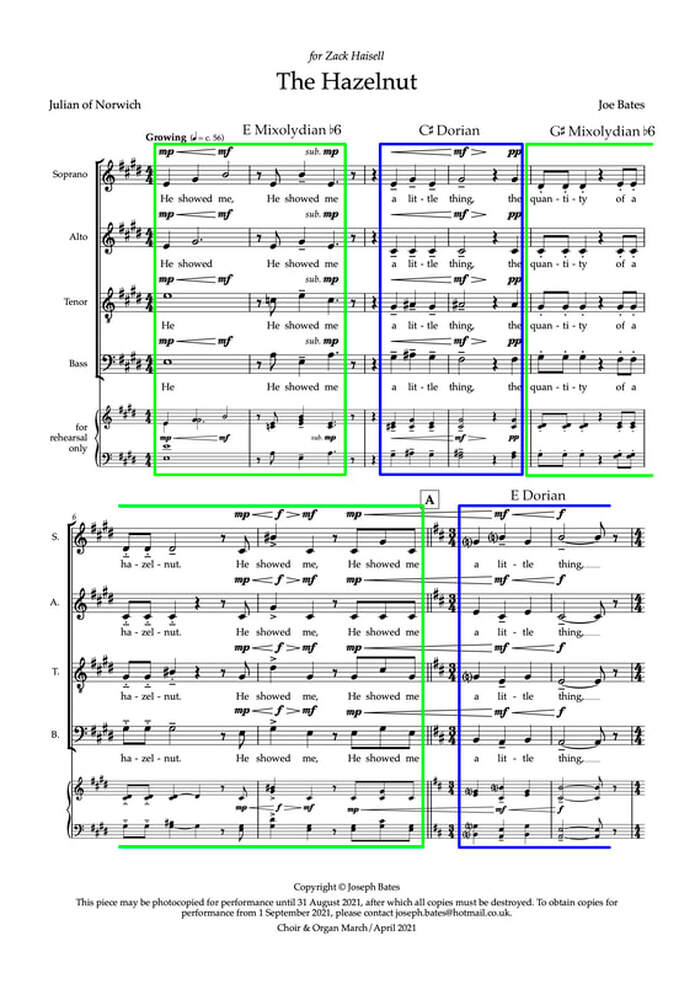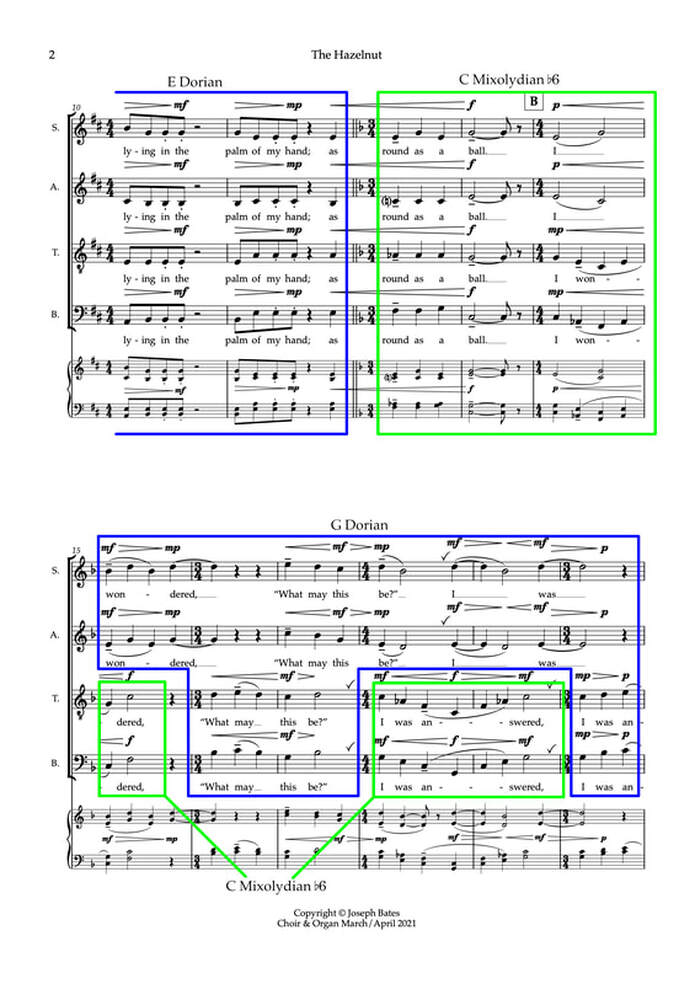For this commission, those adventurous sounds were not practical as the piece had to be performable by a wider range of choral groups. That meant no quartertones, only four vocal lines, and no electronics. To sate my harmonic curiosity, I decided to use a symmetrical structure based on thirds rather than quartertones. I took this approach in two pieces: Some Parts Of Us and The Hazelnut.
The mode is derived from the observation that if you turn a major chord upside down, you get a minor chord, and vice versa. If we combine both the initial chord and its mirror chord, we get a five-note scale – a pentatonic. This is different from our standard pentatonic but is singable and attractive. With the minor chord on top, all five notes are part of the Dorian scale. With the major on top, they are part of Mixolydian flat 6, a mode of the melodic minor.
Using just these notes was too restrictive. My principal question was thus how to generate more material. In Some Parts Of Us, I transposed the Dorian pentatonic to each note of a diminished seventh. This felt intuitive, as the minor third is prominent in the mode. I tried transposing the Mixolydian flat 6 pentatonic to the augmented chord, as the major third is more prominent.
Some Parts Of Us was entirely derived from this Dorian pentatonic/diminished seventh set. My instinct was to do the same with the Mixolydian flat 6 in The Hazelnut. But I found this challenging. The F sharp to B flat tetrachord in the Mixolydian flat 6 pentatonic is a striking sonority that it didn’t flow melodically.
My plan was thus to alternate between the Dorian and Mixolydian flat 6 pentatonics, with the Mixolydian flat 6 on E acting as the tonic:
I stuck to this plan for a while. It functioned nicely while my texture was purely vertical, as at the opening. You can see how the sketch above maps onto the first page of the finished piece:
But I found it challenging to write melodic music within the mode. My teacher, Martin Suckling, counselled that I begin to expand my modal language to include other notes of the scale as the piece progresses, while still centring the notes of the pentatonic. This freer approach worked well – sometimes I'd add passing notes between the main pentatonic notes, other times I'd overlap two pentatonics, opposing the high and low voices. You can see this in the second page of the piece:
To maintain the goal of clarity amidst increasingly dense harmony, I decided the melodic material must be modal. The melody moves through various modes on E Mixolydian, Dorian and Ionian, with a brief detour to C Mixolydian early on. This gives the work flashes of bi-modality – the minor and major thirds of E are often juxtaposed quickly after one another.
What pleased me most about this approach was the simplicity of the harmonic elements. Using mainly major and minor chords, stepwise motion and familiar arpeggios, I was able to create a lush harmonic world. It is not, however, an easy piece to sing. The modes shifts can be hard to find. I’m hoping to try these ideas again, perhaps setting more of Julian of Norwich’s revelations in a manner singable by amateur choral groups.
0 Comments
Leave a Reply. |
NewsYou can find out about recent and upcoming projects here, and stay up-to-date with email or RSS below.
Archives
July 2024
|
|
All photographs by Ilme Vysniauskaite
|






 RSS Feed
RSS Feed